Navarre Bible, Standard Edition (19 vols.)
Digital Logos Edition
The Navarre Bible New Testament, Standard Edition does not include the Bible texts. The print edition cites the RSVCE and the Nova Vulgata, each available separately, or in select Verbum packages.
Overview
In the early 1970s the theology faculty of the University of Navarre embarked on the project of making a new Spanish translation of the Bible—a volume accompanied by commentary designed for the general reader. This project was entrusted to the faculty by St. Josemaría Escrivá, founder of Opus Dei and the university’s first chancellor. The first volume, St. Matthew, appeared in 1976; the project was completed February 2005. The Navarre Bible series is considered by many the best Catholic commentary on the Bible available today.
The main feature of the English edition of the Navarre Bible, Standard Edition is the commentary. More comprehensive than the The Navarre Bible: New Testament, this volume features notes and introductions—rarely very technical—designed to illuminate the spiritual and theological message of the Bible. The Standard Edition is replete with quotations from commentaries by the Fathers, as well as excerpts from other spiritual writers—not least among them, St. Josemaría Escrivá—provided to show how they read Scripture and made it meaningful in their lives.
Key Features
- Draws on numerous Catholic resources
- Provides general introductions, introductions to each biblical book, a table of sources cited, maps, and informative notes
Praise for the Print Edition
[The Bible is] presented unambiguously as the inspired Word of God and, with the help of the commentaries, we are introduced to 2,000 years of contemplative Christian reading and living of the sacred Word.
—Osservatore Romano
. . . Superb volume for adult Bible Study . . . most helpful, enlightening, and fascinating.
—Catholic Transcript
Product Details
- Title: Navarre Bible, Standard Edition
- Authors: Faculty of the University of Navarre
- Publisher: Four Courts Press
- Volumes: 19
- Pages: 6,868
- Resource Type: Commentaries
- Topic: Biblical Studies
This title is included in the following collections
You can save when you purchase this product as part of a collection.
2025 Verbum Gold Library
$849.99$594.99Verbum 10 Académico (Español)
$829.99$829.992025 Verbum Platinum Library
$1,499.99$1,049.99Verbum 10 Oro (Español)
$1,099.99$1,099.99
- $1,699.99
- $2,999.99$2,099.99
- $2,499.99
- $2,999.99
- $2,999.99
- $4,749.99$3,324.99
- $3,999.99
- $4,749.99
- $4,749.99
- $4,749.99
- $7,749.99
- $7,749.99
- $23,999.99$17,999.99
- $21,749.99
- $24,999.99
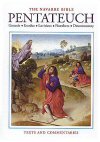
The Pentateuch
- Authors: Faculty of the University of Navarre
- Publisher: Four Courts Press
- Publication Date: 1999
- Pages: 832
The Pentateuch, also known to Christians and Jews as the “Law” (“Torah” in Hebrew), is made up of the first five books of the Bible. Genesis deals with the origin of the world, of man, and of the people of Israel. Exodus is an account of the epic journey of the Israelites from Egypt to the Promised Land. Leviticus deals with ritual holiness and worship. Numbers takes its name from censuses and lists of the Israelites. Deuteronomy, in three great discourses attributed to Moses, describes the later stages of the Exodus.
This handsomely produced volume marks a significant addition to the Catholic Church’s contribution to modern biblical studies . . . This volume seems to offer something very valuable to the modern reader and scholar alike, and I recommend it with great enthusiasm.
—Catholic Herald and Standard
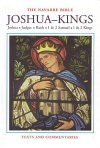
Joshua–Kings
- Authors: Faculty of the University of Navarre
- Publisher: Four Courts Press
- Publication Date: 2002
- Pages: 640
The historical books of the Old Testament recount the fortunes of the people of Israel beginning with the conquest of the Promised Land. Joshua through Kings bring the story up to the point where the independent kingdom of Judah is destroyed by foreign invaders and much of the population deported to Babylon.
This is a book about history, but what it deals with particularly is salvation history; it is part of God’s revelation to mankind and is, therefore of enduring religious interest. Many of the great names of salvation history, as well as their exploits, fill the pages of this volume, and with them the Lord God of Israel engages—wooing them, commanding them, tolerating them, and punishing them for breaking the Covenant made with Moses during the exodus from Egypt.
Here we see Joshua leading the people into Canaan and dividing it among the 12 tribes. During the difficult years of settlement, God raises up leaders to act as judges and saviors—Deborah, Gideon, Jephthah, and Samson, among them. Here too is the delightful story of Ruth the Moabitess, ancestor of David. The prophet Samuel accedes to the peoples’ clamor for a king—anointing first Saul, then David. The volume reports the reign of Solomon—who built the temple of Jerusalem—and the career of the kingdoms of Israel and Judah; it also describes the prophets who strive to keep both kings and people loyal to the Law. Eventually Jerusalem falls, in the year 587. The monarchy is at an end, but the people of God will soon re-emerge from apparent failure, and Jerusalem and the Law will be restored.
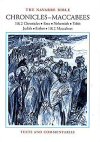
Chronicles–Maccabees
- Authors: Faculty of the University of Navarre
- Publisher: Four Courts Press
- Publication Date: 2003
- Pages: 640
The historical books of the Old Testament recount the fortunes of the people of Israel beginning with the conquest of the Promised Land. The First Book of Chronicles gives the background of the chosen people of God and of the families that made up the 12 tribes; it records, too, the career of David. Second Chronicles begins with Solomon in all his glory and ends with Israel’s ignominious deportation to Babylon. Ezra through Nehemiah record the epic rebuilding of Jerusalem and its temple after the 70-year Babylonian exile. The final books, Maccabees, give vivid accounts of the Jewish experience at a time when Greek successors of Alexander the Great sought to stamp out all traces of the religion of Moses and to replace it with a cosmopolitan pagan ethic.
This, the second of two volumes of “historical books” in the Navarre Bible edition, also contains the three picturesque narratives of Tobit, Judith, and Esther.
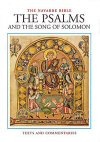
Psalms and the Song of Solomon
- Authors: Faculty of the University of Navarre
- Publisher: Four Courts Press
- Publication Date: 2003
- Pages: 528
Psalms is essentially a book of prayers and praises; most of the psalms are addressed to God, but here we also find proclamations of the works of the Lord, descriptions of man’s plight, curses invoked on enemies, songs in praise of the King or of the city of Jerusalem, and exhortations to the good life. The Psalms date back as early as the time of the great King David, but they are so evocative of the human condition that they articulate the feelings and desires of people in every age. Also included here is the Song of Solomon, or Song of Songs; a blending of love songs, it also celebrates the mutual love between God and the human individual, and between God and His people.
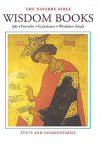
Wisdom Books
- Authors: Faculty of the University of Navarre
- Publisher: Four Courts Press
- Publication Date: 2003
- Pages: 560
While the first five books of the Old Testament (the Pentateuch) record the Law of Moses in the form of commandments, the Wisdom Books propound that teaching in the form of counsels and proverbs. They also reveal the close connection between knowledge that comes through faith, and knowledge acquired through human reasoning.
The book of Job takes the form of a narrative—the story of an upright man who experiences misfortune after misfortune; to a degree, it lifts the veil that shrouds the mystery of suffering. The book of Ecclesiastes helps the believer to appreciate the value of things heavenly. Proverbs consists of seven collections of wise sayings from the ancient Near East. The Wisdom of Solomon, which probably originated in the Jewish community of Alexandria (Egypt), interfaces with the world of Greek culture. Sirach, written by someone steeped in the wisdom tradition of Israel, was much referenced by the early Fathers of the Church.
Reading and reflecting on the Wisdom Books helps prepare the human mind and spirit to receive the Lord and to understand his teaching.
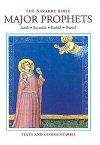
Major Prophets
- Authors: Faculty of the University of Navarre
- Publisher: Four Courts Press
- Publication Date: 2005
- Pages: 896
In the language of the Bible, the words “prophet,” “prophecy,” etc have quite a broad meaning—but all refer, primarily, to the idea of “speaking in the name of God.” The entire Old Testament could be said to be prophetical, but some books carry the names of specific prophets or teachers, twelve “minor” and four “major”—a distinction based on the length of the texts. The books of the major prophets—Isaiah, Jeremiah (with Lamentations and Baruch), Ezekiel, and Daniel—make up this volume of the Navarre Bible.
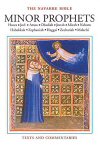
Minor Prophets
- Authors: Faculty of the University of Navarre
- Publisher: Four Courts Press
- Publication Date: 2005
- Pages: 368
In the language of the Bible, “prophecy” has quite a broad meaning—but it refers, primarily, to the idea of “speaking in the name of God." The entire Old Testament could be said to be prophetic, but some books carry the names of four “major” and twelve “minor” prophets—a distinction based on length. Not all of them easy to date, the authors and editors of these books—collectively the “roll of the twelve prophets”—lived sometime between the eighth and second century BC.
The Psalms aside, the books of the prophets are the Old Testament sources most often referenced in the New Testament. Their message covers all aspects of Israelite and Christian faith: belief in One God, his chosen people, the Messiah, and the path to salvation.
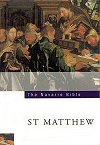
St. Matthew
- Authors: Faculty of the University of Navarre
- Publisher: Four Courts Press
- Publication Date: 2005
- Pages: 218
The Gospel of Matthew tells the story of Jesus: his life, ministry, death, and resurrection. Aimed toward a Jewish readership, the Gospel includes Jesus’ genealogy and reveals how Jesus fulfilled the Scripture; these are two factors essential in proving Jesus as Messiah foretold in Old Testament Scriptures. Matthew also lays out the foundation of the church, articulating in practical terms what it means to be Christ’s servant and disciple.
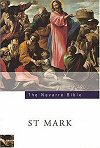
St. Mark
- Authors: Faculty of the University of Navarre
- Publisher: Four Courts Press
- Publication Date: 2005
- Pages: 176
The Gospel of Mark is the most concise of the four Gospels. Recognized as the earliest canonical Gospel, it narrates Jesus’ ministry, beginning with his baptism and continuing through his death and resurrection; it includes a particular focus on Jesus’ last week of life. Mark highlights the miracles and parables of Jesus, revealing Jesus’ great power and authority through his works and words.
We heartily and strongly recommend this splendid volume. It is just what so many have been waiting for.
—Homiletic & Pastoral Review
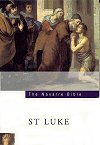
St. Luke
- Authors: Faculty of the University of Navarre
- Publisher: Four Courts Press
- Publication Date: 2005
- Pages: 238
The Gospel of Luke is unique in the fact that almost half of its content is not found in the other Gospels; this content includes Jesus’ infancy, certain parables, and the appearance of the risen Christ to his disciples at Emmaus. Luke highlights Jesus’ preparation for ministry: his baptism and temptation. This Gospel provides a narrative for Jesus’ extensive ministry in Galilee, where he began his preaching, called the twelve disciples, and worked many miracles, as well as for his ministry in Jerusalem. Luke presents universal salvation through Jesus Christ and this underlying theme is evident throughout the Gospel.
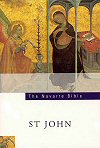
St. John
- Authors: Faculty of the University of Navarre
- Publisher: Four Courts Press
- Publication Date: 2005
- Pages: 232
The Gospel of John differs from the rest of the Gospels in several ways. This Gospel does not mention the Transfiguration, the institution of the Eucharist at the Last Supper, or many of Jesus’ miracles. But since the author, St. John, was a disciple of Christ, this Gospel lends detail to various events—after all. St. John witnessed Jesus’ works and teaching (John 21:24).
The subject of faith is emphasized throughout the Gospel, which, through Jesus' signs, words, and actions, urges readers to believe—it affirms that he is indeed the author of salvation, the bread of life, the light of the world, the life of the world, and most of all, the messianic king prophesied in the Scriptures.
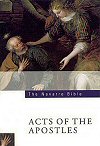
Acts of the Apostles
- Authors: Faculty of the University of Navarre
- Publisher: Four Courts Press
- Publication Date: 2005
- Pages: 232
The Acts of the Apostles is a compendium of the Christian faith in action. It combines history and theology to illustrate various aspects of the first Church—among them, how Christianity spread after Christ’s ascension and how the Church was established. It provides a detailed view of the life of the early community of Christians in Jerusalem and of the dispersion of the Christians, as well as of Paul’s missionary journeys and imprisonment.
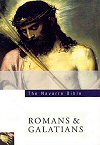
Romans & Galatians
- Authors: Faculty of the University of Navarre
- Publisher: Four Courts Press
- Publication Date: 2005
- Pages: 196
The epistles of Paul to the Romans and the Galatians are two of the “Great Letters” written during Paul’s third missionary journey—the other “great letters” are 1 and 2 Corinthians. Galatians was written in response to the debate among Christians of Jewish background over whether salvation was contingent on the observance of the Mosaic Law. Extending and deepening what he wrote in Galatians, Paul fleshes out the tenets of faith in Romans, addressing key aspects of the teaching and redemptive work of Christ. Paul also treats four important notions: sin, death, the flesh, and the Law, emphasizing the demands of the Christian faith in relation to moral conduct.
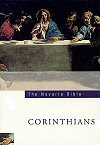
Corinthians
- Authors: Faculty of the University of Navarre
- Publisher: Four Courts Press
- Publication Date: 2005
- Pages: 224
The epistles to the Corinthians were written to the young church in Corinth as it wrestled with the immoral environment surrounding it—and with that environment's clash with the moral standards of Christianity. Divisions in the church became a problem, so Paul wrote 1 Corinthians as a response to the discord. In his letter, Paul addresses a wide range of issues faced by the Corinthian church, including incest, marriage, virginity, lawsuits, and consumption of sacrificed meat—he sets guidelines to help the Corinthians discern what is morally right and wrong. Feeling attacked by the church in Corinth and sensing that the situation is still complicated, Paul’s Second Epistle to the Corinthians is a defense of his authority as an apostle of Jesus Christ.
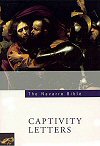
Captivity Letters
- Authors: Faculty of the University of Navarre
- Publisher: Four Courts Press
- Publication Date: 2005
- Pages: 190
Paul’s “Captivity Letters,” the epistles of Philemon, Colossians, Ephesians, and Philippians, were written during his period of imprisonment. In these four letters Paul discusses, among many things, Gnostic teaching, the mystery of Christ (Christology), specific points of faith that Christians should adhere to, and the theology of the Church.
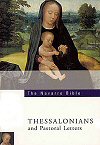
Thessalonians & Pastoral Letters
- Authors: Faculty of the University of Navarre
- Publisher: Four Courts Press
- Publication Date: 2005
- Pages: 160
The First Epistle to the Thessalonians was written to the young church in Thessalonica after Paul fled the city due to persecution by Jews. This letter brought encouraging news to the Thessalonians and reassured them of the exalted fate of those who died as a result of persecution. Still, confusion persisted concerning Paul’s teaching of Christianity, Christian conduct, and Christ’s second coming. Paul’s Second Epistle to the Thessalonians addresses those remaining concerns regarding Christ’s second coming that the Church of Thessalonica still had. The “Pastoral Letters,” 1 and 2 Timothy and Titus, were written to Paul’s two faithful disciples as guides for church government. These letters include practical advice and theological concepts, as well as guidance for Christian conduct.
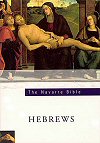
Hebrews
- Authors: Faculty of the University of Navarre
- Publisher: Four Courts Press
- Publication Date: 2005
- Pages: 160
One of the most important New Testament books is the Epistle to the Hebrews. This letter was addressed to Christians of Jewish origin. In it, Paul encourages such Christians to persevere in their faith even as they face persecution. More importantly, the letter provides the audience a doctrine of the priesthood, sacrifice, and superiority of Christ, illustrating that Christ is the New Covenant and, the fulfillment of the Old Covenant—and that, therefore, his priesthood is on a higher level than the Levitical priesthood and his sacrifice is greater than all the sacrifices of the Old Law.
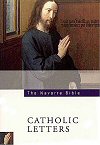
Catholic Letters
- Authors: Faculty of the University of Navarre
- Publisher: Four Courts Press
- Publication Date: 2005
- Pages: 224
The “Catholic Letters” include James, 1 and 2 Peter, 1–3 John, and Jude. These letters are grouped together to distinguish them from the Pauline corpus (the thirteen previous letters, plus Hebrews). The letters, for the most part, address the Church as a whole—rather than specific churches or individuals—and contain religious instruction and moral teaching to encourage their readers to lead deeply Christian lives.
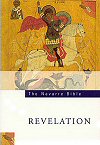
Revelation
- Authors: Faculty of the University of Navarre
- Publisher: Four Courts Press
- Publication Date: 2005
- Pages: 154
Revelation is the only prophetical book in the New Testament. Written during a period of exceptional stress, this book provided encouragement to Christians as they faced persecution. It not only warns Christians of the potential dangers that threaten faith, but also encourages them in their suffering to commit themselves to God and to focus on Christ, his Second Coming, and eternal life.